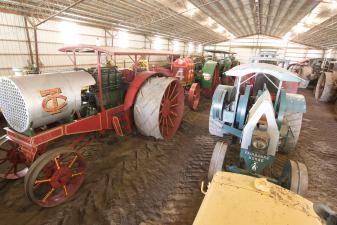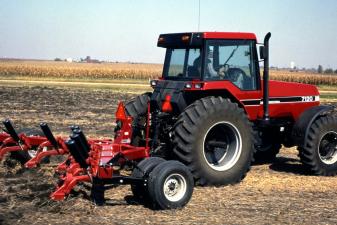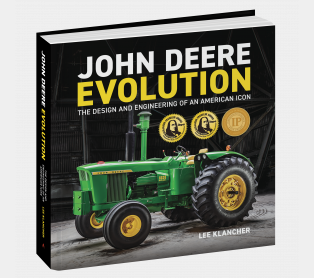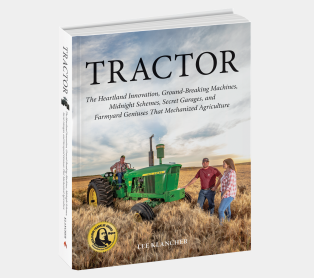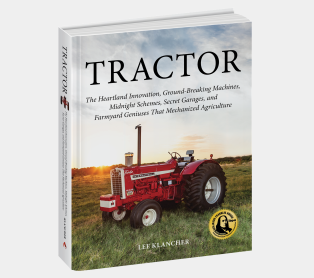The First Tractor

This article was originally published as a feature in the Ageless Iron section of Successful Farming magazine, where Lee Klancher is a regular contributor.
As a long-time gearhead, I’ve spent most of my life accumulating large piles of mechanical bits that might someday come in handy, ranging from parts for a 1972 Blazer I had sold (but planned to get another someday), bits of my grandfather’s Ford Model 9N, and a box of completely unidentifiable but potentially useful tools that came from my family’s farmhouse in Willard, Wisconsin.
Like for most of us, every once in a blue moon one of these items proves to be useful. The rest of the time, it’s just a steadily increasing pile of clutter. When the odd bit turns out to be a valuable part, it’s fabulous. For example, I recently used an extra hangar that had been in my garage for at least a decade to hang a ladder on the back of my shed. No trip to Home Depot necessary—that’s at least $2.49 in the bank!—and my day was made.
These things lying around came to mind as I’ve been researching and thinking about the very first tractors for my book, Tractor. The book follows the machine through the most innovative machines built and begins at the turn of the 20th Century.
The early innovators were people who had things lying around (and did exponentially more than hang a ladder). One of the amazing stories of the very first tractor comes from a guy who failed miserably but was reaching far beyond the simplistic task of hanging a tool.
In the early 1890s, a farmer by the name of W. J. Jamieson had a Charter engine lying around and he fastened it to a self-propelled truck. The machine was gear driven and, due to his lack of understanding of how gears interacted, ran backwards. He gave up in disgust and sent a letter to the Charter Engine Company suggesting that if they could figure out how to make a contraption like this work, he’d buy one.
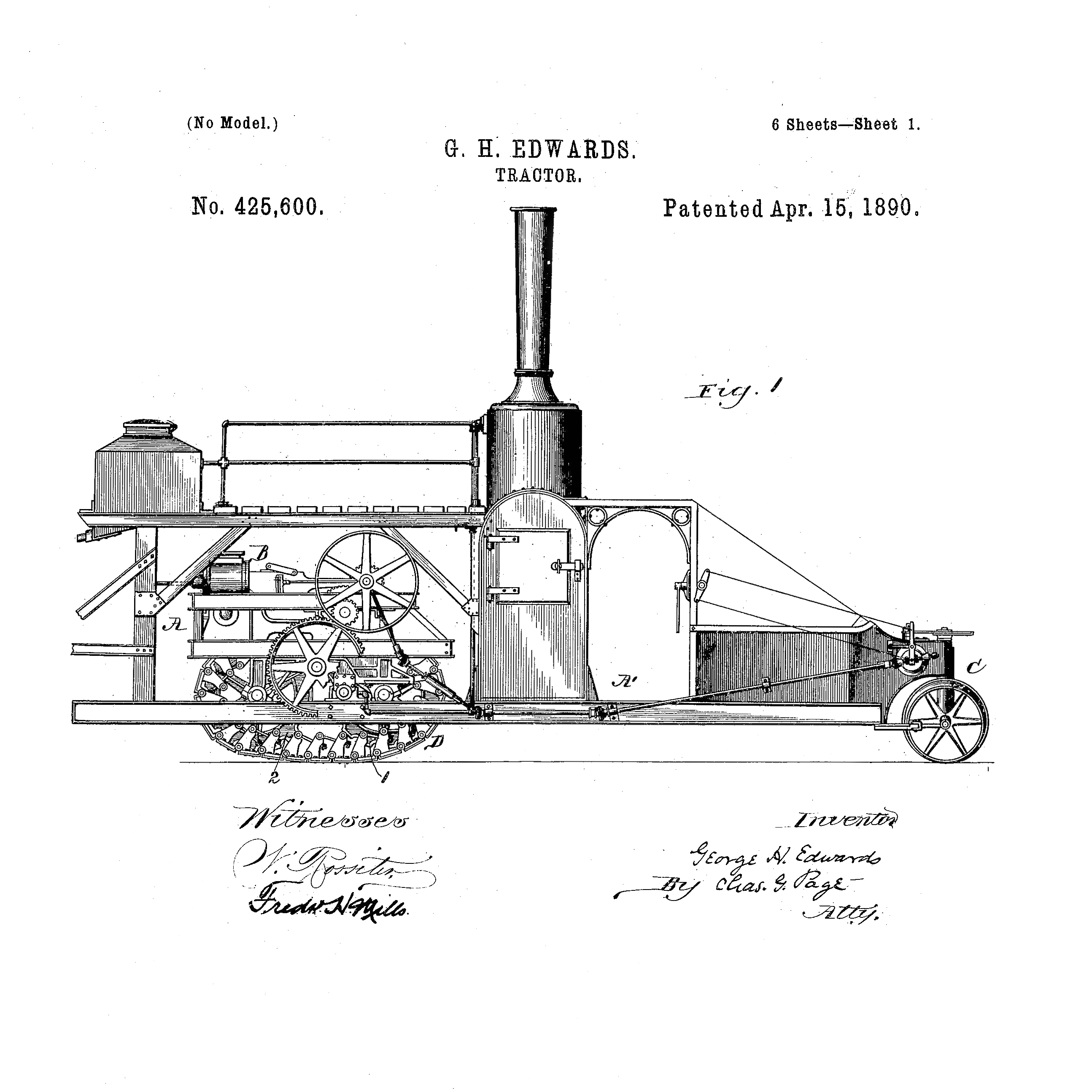
This 1890 patent is one of the first known recorded use of the term “tractor” to describe an agricultural powered vehicle. Photo courtesy of US Patent Office
The Charter Engine Company took on the challenge with gusto, and the machine they built was one of the first self-propelled gas farm tractors in recorded history. Which came about because a guy in a field wanted to find a better way, had some interesting stuff lying around, and had the gumption to start bolting things together.
The imagination required for this is fascinating to me. Jamieson probably had been exposed to horseless carriages, steam engines and steam tractors, but he had to make the leap from seeing those machines to think about how one might work on his farm.
This time period is interesting as well; things lying around could lead to such incredible innovations. I believe perhaps the early days of computers and software were like this; an era when a new technology has appeared in the world and the visionaries and scammers and geniuses were experimenting with how to turn these new things into useful ways to improve their situation.
The first tractor designs varied wildly, and the machines are unrefined and delightfully analog. Early tractors operate like Rube Goldberg machines, with a mass of exposed mechanical things spinning, popping, spitting, and chuffing.
These machines must have been a spectacle in their day, as the technological advances they wrought were more visual and visceral than the gray boxes and green screens of early computers. The changes that took place on the farm at that time had to be dizzying.
Back to my point, which is that one of the best stories in early tractors is that of John Froelich, the son of a German immigrant. John grew up in eastern Iowa, an area his father chose because of the rolling hills covered with rich farmland. John grew up ambitious and innovative. By the mid-1880s, he owned a grain elevator in the town of Froelich, Iowa.
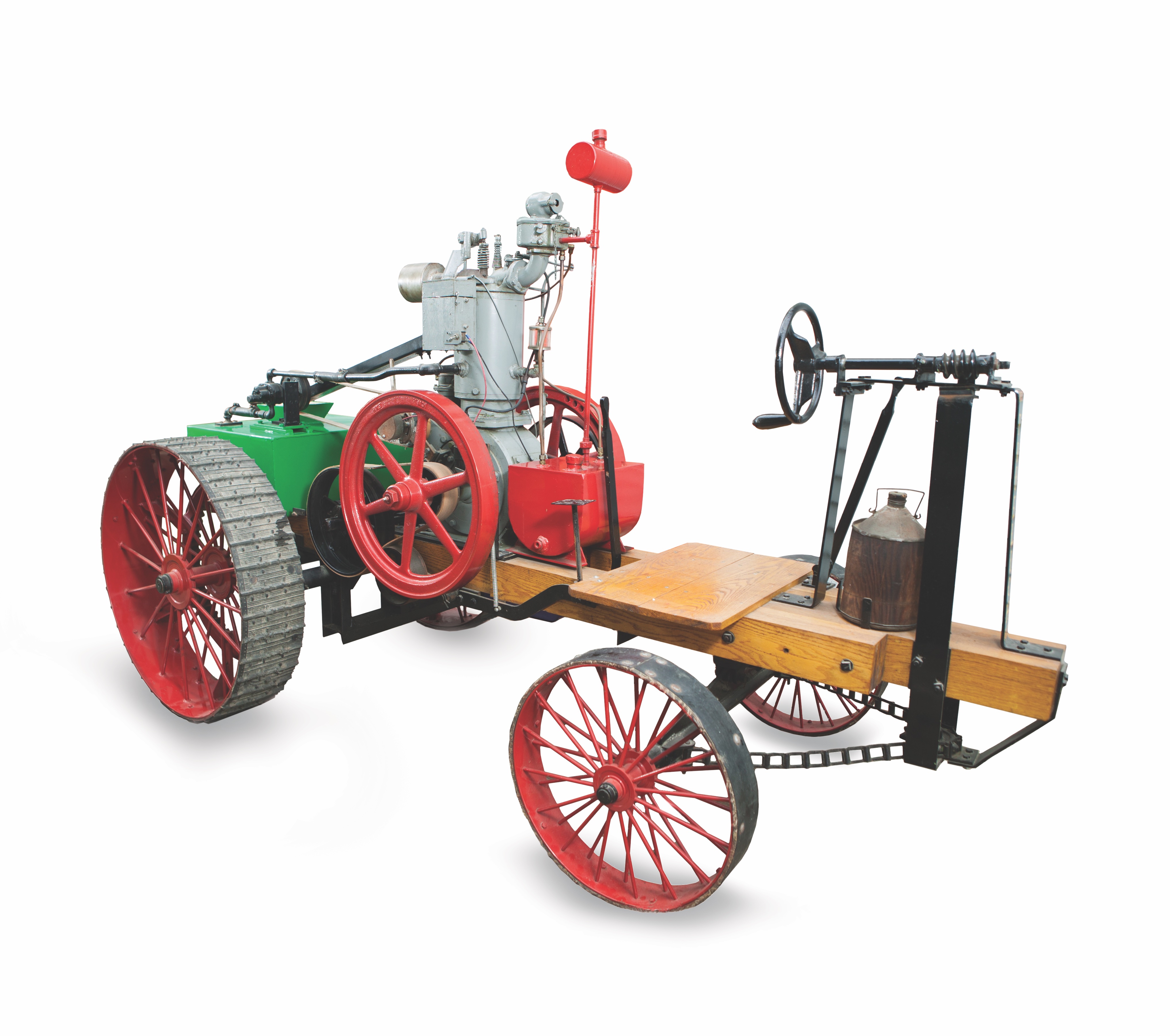
The Froelich Tractor was the first successful farm tractors that could be driven in forward and reverse. The Froelich Tractor was constructed using a Van Duzen engine and a Robinson Chassis. Photo by Lee Klancher
Froelich had an inventor’s soul. When he encountered problems, he developed new gadgets. He holds fourteen patents, and invented a washing machine, dish washer, and an air conditioner. He also tried his hand at creating a corn picker. When he took it out for testing and burned down the corn field, he turned to other innovations.
He owned a steam engine and a J. I. Case threshing machine, and he took a crew each year to thresh grain in South Dakota. Froelich was frustrated with aspects of the South Dakota threshing operation. Froelich lost time due to the engine taking three hours to fire, alkaline water causing the engine to foam, and damp corn shocks refusing to light. He needed a better way. When he purchased a gasoline engine for use on his farm in Iowa, he believed he had found one.
In 1890, Froelich recruited a local man, William Mann, to help him create a self-powered gas engine to use on his operation in South Dakota. The men worked in a small blacksmith shop as well as the back of Froelich’s general store to couple a single-cylinder Van Duzen engine to a Robinson chassis. The tractor was capable of moving frontwards and backwards and could power a thresher via a belt.
In August 1892, the new self-powered machine and a crew of sexteen men were sent to South Dakota. The results were dramatic. Coupled to a J. I. Case thresher, Froelich reported that his machine harvested a remarkable 72,000 bushels of grain in fifty-two days.
The success inspired Froelich to work with investors and found the Waterloo Gasoline Traction Engine Company in 1893. The company built and sold four tractors, two of which were returned by dissatisfied customers.
Froelich and his wife and four kids moved to Dubuque, Iowa, after leaving the Waterloo company. He worked for several engine manufacturing companies, before moving to St. Paul, Minnesota, in 1929. He lived in St. Paul until his death on May 23, 1933. He was inducted into the Iowa Inventors Hall of Fame in 1991.
He accomplished at least some of this by having the gumption to use what he had lying around to build something that solved a problem.

John Froelich holds fourteen patents and invented a corn picker, washing machine, air conditioner, and a self-propelled reversible farm tractor. Photo courtesy of US Patents Office
If you would like to read more stories like this one, check out the Related Books linked below


